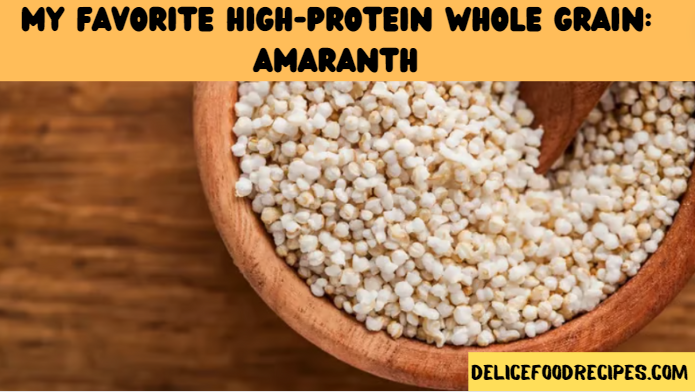This protein-packed ancient grain has earned a permanent place in my pantry.
My Favorite High-Protein Whole Grain: Amaranth
Whole grains are an essential part of my diet, providing both comfort and satisfaction. The variety of whole grains I keep stocked in my pantry is nonnegotiable, as they not only supply the necessary carbohydrates for energy but also offer a wealth of other nutrients. Among these nutritious whole grains, amaranth stands out as my favorite high-protein option.
What Is Amaranth?
Amaranth, despite its recent popularity, has been consumed for thousands of years. It was a staple in the diets of ancient civilizations such as the Aztec, Maya, and Inca. While amaranth is often referred to as a “pseudocereal,” it can be considered a whole grain due to its classification as a seed from a different plant species than traditional cereal grains. It shares many similarities with common whole-grain cereals like oats and barley and can be prepared and enjoyed in the same way. With its nutty flavor and thick consistency, amaranth makes an excellent choice for both sweet and savory porridges.
Packed with Protein
Amaranth is my go-to whole grain because it is a plant-based protein powerhouse. In a cup of cooked amaranth, you’ll find an impressive 9 grams of protein, making it a complete protein source. It contains all nine essential amino acids necessary for building muscle, hormones, neurotransmitters, and immune-supporting antibodies. Additionally, amaranth seeds contain a protein peptide similar to lunasin, known for its cancer-fighting properties found in soybeans.
Rich in Fiber
One of the advantages of consuming whole grains is their high fiber content, unlike their refined grain counterparts. Fiber is a vital nutrient that helps stabilize blood sugar levels, support digestive health, and lower cholesterol levels. To meet the recommended daily intake of 25 grams of fiber, I incorporate half a cup of amaranth into my diet, which provides 4 grams of dietary fiber—16% of the recommended amount.
Excellent Source of Iron
As a dietitian and a mother, ensuring my family’s iron intake is a top priority. Iron is essential for red blood cells to transport oxygen throughout the body. While meat is a well-known iron source, amaranth, as a plant-based food, also provides this vital mineral. A cup of amaranth contains 5 milligrams of iron, equivalent to 45% of the recommended intake for a 6-month-old baby. Although our bodies more effectively absorb heme iron from animal-based foods, pairing amaranth with vitamin C-rich foods can enhance the absorption of nonheme iron.
High in Magnesium
Maintaining adequate magnesium levels is crucial for various bodily functions, especially during times of high stress. Magnesium plays a role in protein production, muscle and nerve function, and blood pressure regulation. When I feel particularly stressed, I turn to amaranth to boost my magnesium intake. A cooked cup of amaranth provides 160 mg of magnesium, equivalent to 38% of the recommended daily value for this mineral.
Gluten-Free Option
Amaranth is one of the few gluten-free whole grains available, making it an excellent choice for individuals with celiac disease or gluten sensitivity. Alongside other gluten-free grains like quinoa, buckwheat, and rice, amaranth expands the variety of options for those following a gluten-free diet.
How I Enjoy Amaranth
Amaranth’s versatility allows it to be used in various dishes. Before preparing amaranth, I soak the whole grain overnight to improve digestion and optimize nutrient absorption. Once soaked, I enjoy making a delicious porridge by boiling amaranth in water. This porridge can be adorned with berries, sweetened with maple syrup, and drizzled with almond butter for added flavor and nutrition. The texture of amaranth porridge is a delightful marriage between oatmeal and chia pudding.
If porridge isn’t your preference, you can grind amaranth into a fine powder and use it to make protein-packed pancakes or muffins. Additionally, popped amaranth can be added to homemade granola for an extra crunch. For a savory twist, amaranth can function as a thickening agent in soups, stews, and chili. The culinary possibilities with amaranth are truly endless!
In conclusion, while I enjoy rotating a variety of whole grains in my diet, amaranth has become a preferred staple. This high-protein whole grain offers a host of essential nutrients and can be incorporated into various recipes. Whether as a porridge or in other culinary creations, amaranth is an excellent gluten-free alternative to diversify your whole-grain intake.



